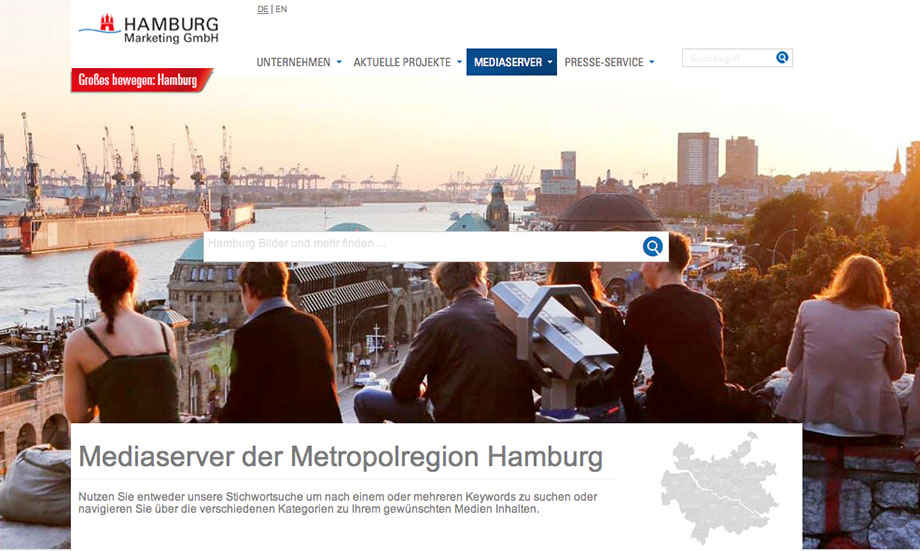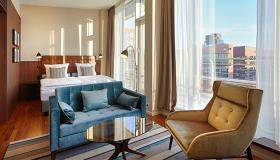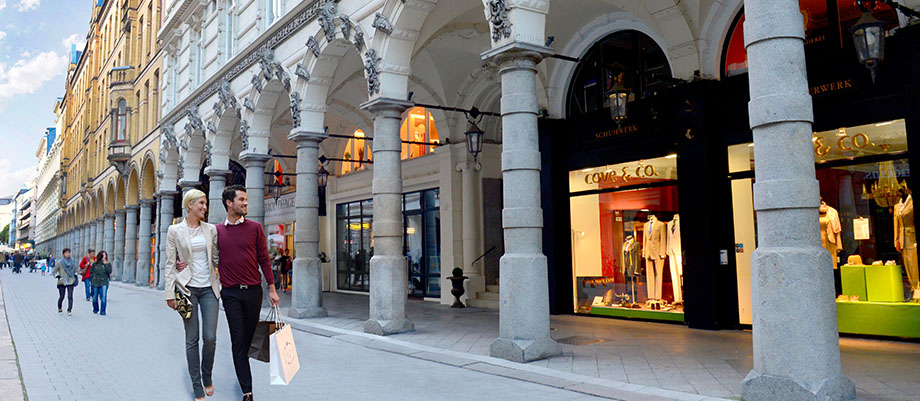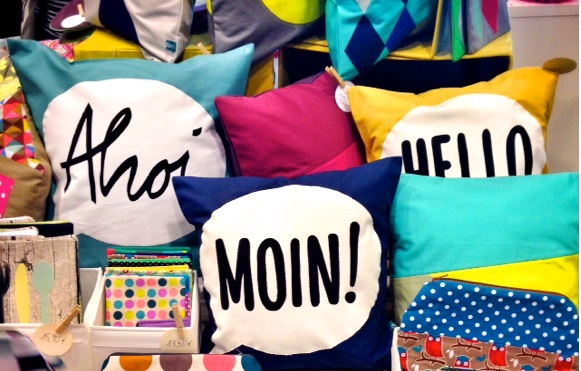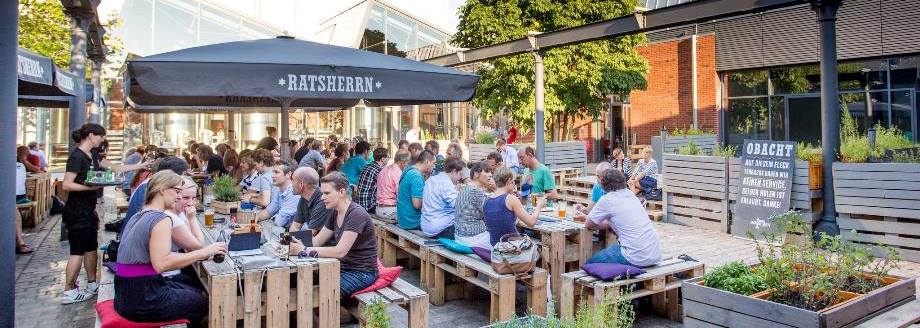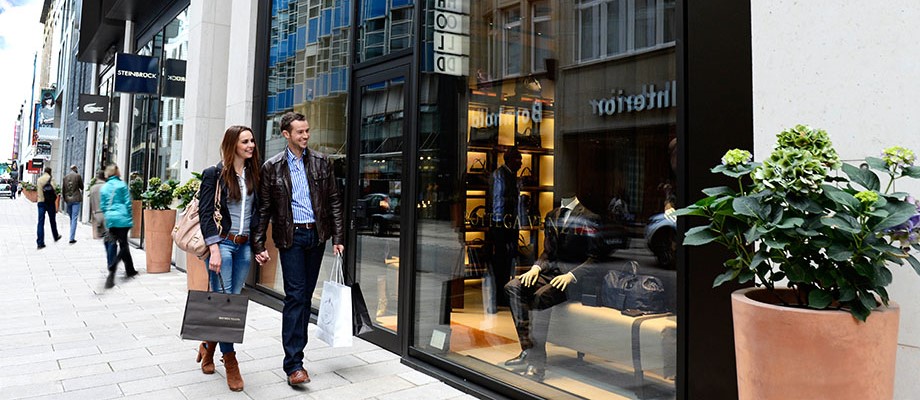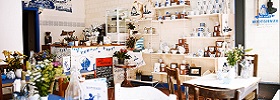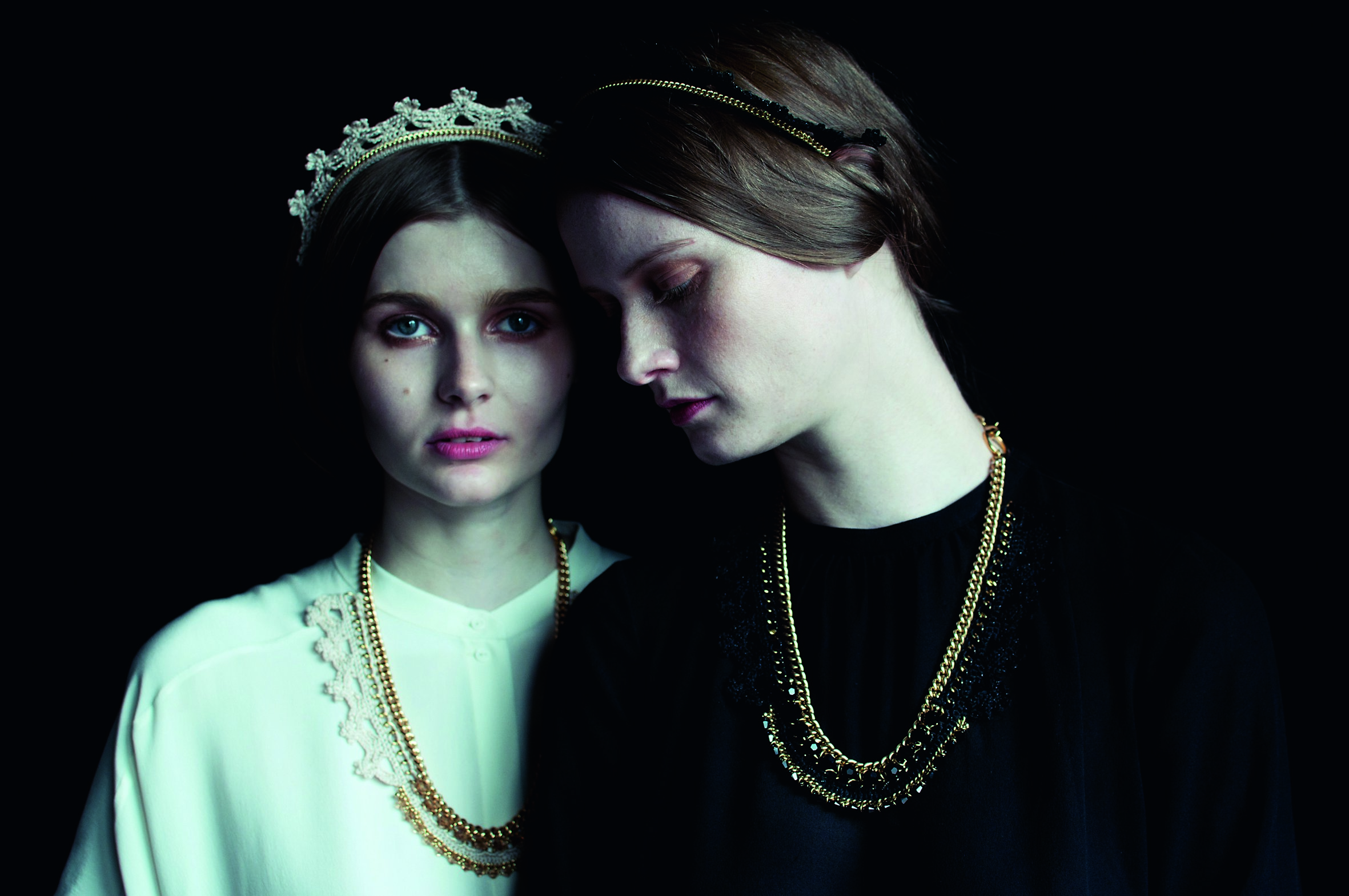Hamburg design: combining elegance and understatement

Hamburg boasts a vibrant design scene. Around 14,000 designers work in the city on the Elbe – more than in any other city in Germany. And Hamburg’s designers have begun to shape their living environment, too. Design made in Hamburg is characterised by Hanseatic values such as honesty, quality awareness and understatement. Restaurateurs, designers and interior design specialists jointly develop shops, showrooms, cafés and restaurants that tell their own Hamburg story and make your shopping trip a true experience.
In the heart of the new HafenCity Hamburg district, you can find the “25Hours Hotel Hamburg HafenCity”. The hotel‘s architecture is reminiscent of a ship’s hull that has dropped anchor on a street corner. The design concept of the hotel pays tribute to the proximity to the port and Hamburg‘s seafarer’s myth: industrial port markings provide guidance to guests, in the foyer a ship container is decked out as a meeting room, and the rooms have been individually designed based on real sailors’ biographies.
Very fittingly, books and maritime souvenirs can be purchased at the “Mare Kiosk” around the clock. Next door, the restaurant “Heimat Küche + Bar” serves contemporary interpretations of classic specialities from Hamburg and the surrounding region, and even the fish and chips are offered to guests wrapped in the Hamburger Abendblatt newspaper. Julia Erdmann, partner at the architecture firm Stephen Williams Associates, explains the design concept: “The 25Hours Hotel is a good example of Hamburg design and the characteristic fusion of contrasts. Rough industrial material and sailor‘s anecdotes in elegant proportions topped off with perfect workmanship. This is Hamburg's raw elegance.“
Only a few minutes' walk away you will find the showrooms of “designxport”, Hamburg‘s presentation platform for design, created by Stephen Williams. Again, based on Stephen’s concept, a place has been created that encourages communication – an open stage for designers. On the ground floor, exhibitions and events are hosted on a regular basis, and in the gallery one floor above, visitors can delve into magazines, books and a materials library. The long table in front of the “Ideenkiosk”, which serves regional specialities, is a popular meeting place.
Through the flexible use of fixtures, furniture and staging technology, the rooms provide the perfect setting for group exhibitions and retrospectives by local designers as well as lectures and discussion nights to facilitate exchange with colleagues from around the world. In the adjacent “X-Shop” visitors can buy original toys, stationery accessories, small furniture and lamps created by both local designers and under designxport’s own label.

Another special place that has been realised by Stephen and his team is the “Weltbühne” café and restaurant that belongs to the Thalia Theater and is situated in close proximity to Mönckebergstrasse. Comfortable leather banquettes, dark wooden tables and a geometrically tiled black-and-white floor evoke memories of classic artists’ cafés. “Design made in Hamburg is not loud and cutting-edge, but rather quiet and elegant,” says Stephen. “It is not an end in itself but functional in everyday life, commercially successful and at the same time of high design quality.”
Highlights in Altona
Hanseatic values also inspire the city’s furniture designers. In the furniture showroom of “More Möbel” in a backyard off Bahrenfelder Steindamm you can view their current collection while enjoying an espresso. Under his label, designer Bernhard Müller offers elegant furniture made of solid wood, ranging from leather-lined chairs to customised beds. Bernhard, who is also the company’s founder, treasures the typical Hamburg virtue of understatement. Born in Münster (North Rhine-Westphalia), the designer represents the German tradition of puristic design: “The pieces of furniture I create are characterised by a clear-cut, minimalistic design. They are aimed to shape a room by providing freedom rather than dominating the room,” he explains.
In a former fish smokery in Ottensen and also located in a backyard, David Einsiedler has set up “PLY unestablished furniture” with great attention to detail. Here he displays pre-owned industrial furniture alongside modern design classics. “Just like Hamburg, Ply is cosmopolitan and international in spirit. Within Germany’s furniture and interior landscape, we provide a unique mix of vintage originals, design classics by Finnish brand Artek as well as in-house designs,” says David in describing the company, which he manages together with his wife.
Directly on the Elbe and just off the St Pauli Fischmarkt, a listed red-brick building is home to the stilwerk Hamburg – a large department store with 28 exclusive shops as well as showrooms, cafés and restaurants. Hamburg-based designer Rolf Heide transformed this former malt house into a design eldorado. The shop just inside the stilwerk’s entrance is run by Tobias Grau, who offers quality lamps, some of which have a futuristic appeal reminiscent of the “Space Age Design” of the 1970s. The designer and entrepreneur established his lighting company in 1984. While his brand has long since gone international, “our roots remain in Hamburg,” says Tobias. “That’s why being present in the stilwerk is important to us.”
Deli & interior design
In collaboration with interior design specialists and restaurateurs, Hamburg's vibrant designer scene continues to create new concepts for deli shops, cafés and restaurants that offer the perfect mix – from exquisite food with elegant packaging to the smallest detail of interior design. Many of Hamburg’s approx. 14,000 designers work for Hamburg-based clients, especially in the areas of graphic design, packaging and corporate design. In recent years, they have also been shhaping their living environment in the area of food and beverage. The “Elbgold” coffee bar in the Schanzenviertel, the Henssler & Henssler” sushi ”restaurant at the Fischereihafen and the “Beisser” butcher’s with its deli shop and bistro in Ottensen are all examples of the works of designers who have combined a holistic design with a comfortable setting.
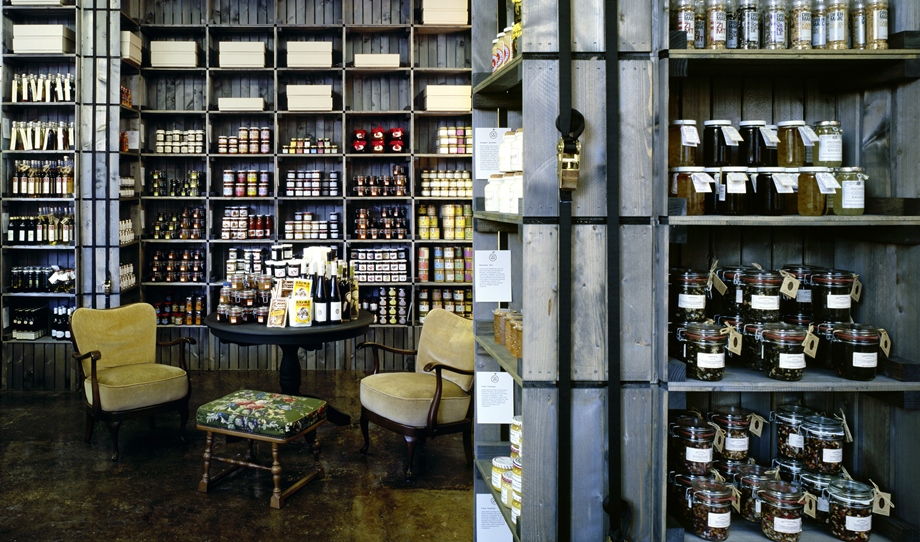
Another example of a convincing brand identity is the Hamburg-based deli chain “Mutterland” with its main branch located near the central train station in close proximity to the Outer Alster Lake. Amidst an interior reminiscent of a nostalgic corner shop, urban customers are lured by high-quality products from family-run manufacturers. With wooden boxes used for product presentation, the interior design creates an atmosphere that evokes feelings of the “good old days”. In the restaurant area you can enjoy traditional dishes at tables and chairs with a vintage charm. Jan Schawe, designer and restaurateur, summarises the concept of his brand, which sports a heart and pretzel logo, as a “homage to loving mothers and the local cuisine.” It was Jan himself who designed the packaging and graphic design of his store chain, while the interior was developed in collaboration with “Scala Wohnen”, a design shop and planning office that is a real Hamburg institution when it comes to interior design.
Together with his team, Volker Hartmann, managing director of “Scala”, also provided the furnishings for the minimalist tea brand “t” in the district of St Georg. The distinctive “t” in the shop windows of the “t.boutique & t.bar” is visible from afar. Inside the bar, alternating light and dark wooden shelves span from wall to wall. With its clear-cut elegance, the furnishing is coherent with the simple product packaging in old rose and the company’s golden lettering logo. Keeping with the Hanseatic virtues, the design is both elegant and restrained: nothing should distract from the quality of the product. In addition to hand-picked teas from around the world, the t.bar offers spice mixes, sweets and biscuits with a hint of Matcha, a fine green tea powder. Here in the Lange Reihe shopping street, you can once again feel the typical Hamburg trend towards shops, cafés and restaurants that are jointly created by designers from different disciplines and which have their own story to tell. With unadorned elegance or rough charm, for both are part of Hamburg's tradition.
(Published March 2016)

